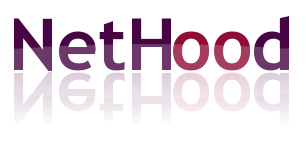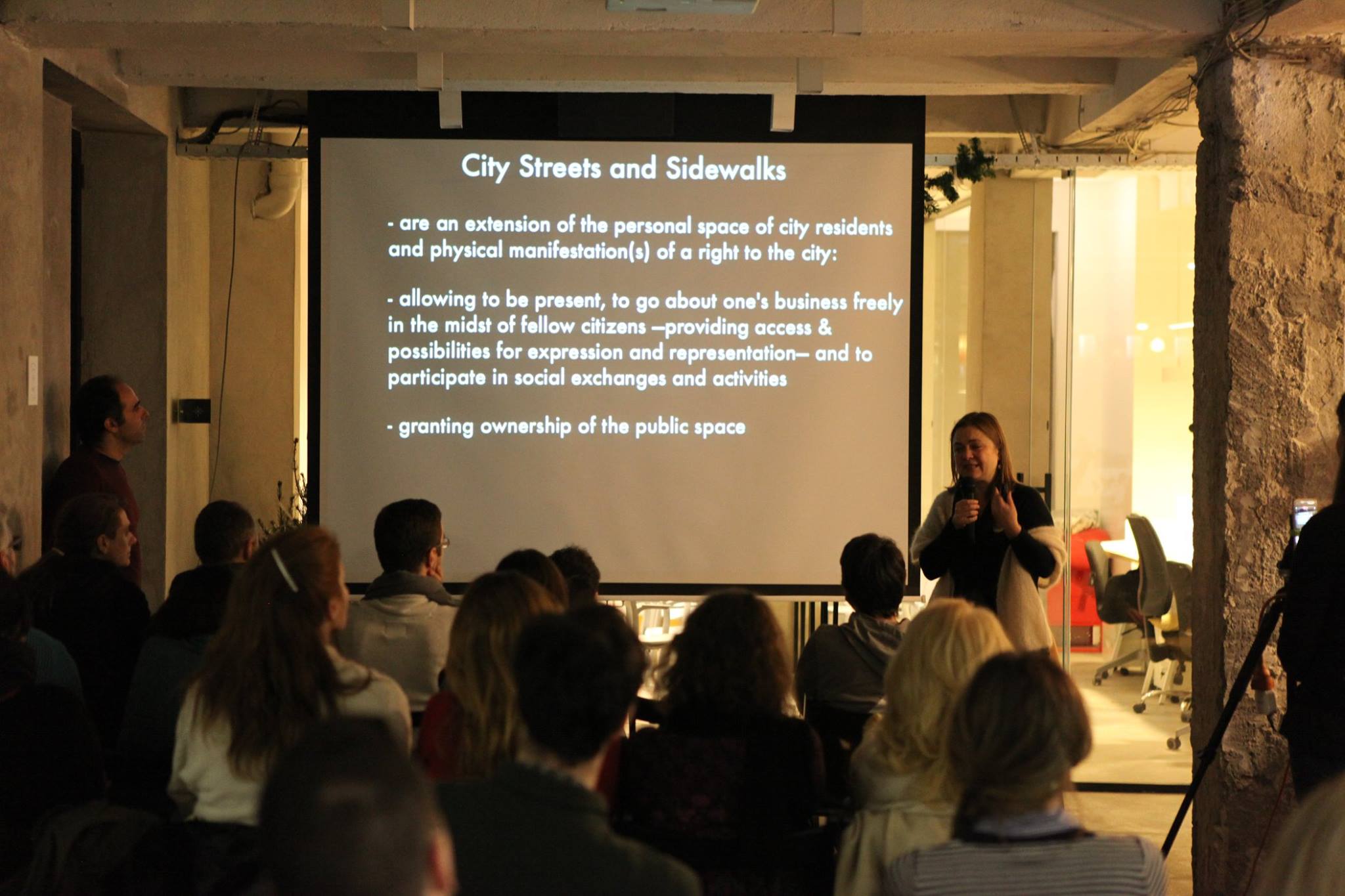
|
about
projects
papers
events
contact
|
Toward a Federation of Hybrid Spaces
Panayotis Antoniadis
our networks, online, September 8 2020
Organic vs. Algorithmically Modified Internet
Panayotis Antoniadis
#SWAP - So what about politics?
iMal, Brussels, November 3, 2017
Network infrastructure as commons and the right to the hybrid city
Panayotis Antoniadis and Ileana Apostol
Nova Iskra, Belgrade, January 19, 2017

Seminar in the context of the project "Studies of the Common" co-organized by Nova Iskra and Ministry of Space. Description in Serbian is available here. And the video recording is available here.
Network infrastructure as commons
Panayotis Antoniadis
European Commons Assembly, Brussels, November 2016
Starts at 1:02:17
See also a related article at The Conversation Global, and its follow-up
The Sardex.net side effects
Panayotis Antoniadis, with Paolo Dini and Giuseppe Littera
Mitzas Conference, Cagliari, October 2015.
Starts at 13:30
See also the short news story on Sardex.tex by TV7 and all the videos from the Mitzas 2015 conference
Offline networks
Panayotis Antoniadis
FLOSS4P2P workshop @FabLab, London, March 16-17th, 2015.
http://p2pvalue.eu/blog/floss4p2p-workshop-call-participation
NetHood: Being together in the hybrid city
Ileana Apostol and Panayotis Antoniadis
Community Now? symposium, Berlin, February 19-21st, 2015.
http://www.community-now.org/ [program]
Slides [pdf]
Local networks for local interactions: four reasons why and one way forward
Panayotis Antoniadis
ADAM Symposium on "Reclaiming the Internet" with distributed architectures: rights, technologies, practices, innovation, MINES ParisTech, Paris, October 2-3, 2014
Material: extended abstract, slides, and video
Collective awareness as a public good
Panayotis Antoniadis
Collective intelligence for the common good - Establishing an Open Research and Action Community Network, London, The Open University, 29-30th September 2014
http://events.kmi.open.ac.uk/catalyst/
From Smart Cities to Engaged Citizens
Panayotis Antoniadis and Ileana Apostol (a "double" interdisciplinary talk)
Design Research Lab, Berlin University of the Arts, June 2nd 2014
The virtual space created through the use of information and communication technologies (ICTs) overlays more and more closely the physical space of cities, contributing in the formation of a new hybrid space. Our ambitious goal is to provide concrete tools (analytical, conceptual, and practical) that will allow citizens to make informed design choices and shape the hybrid urban space according to their own needs, values and objectives (http://nethood.org). For that, in this talk we provide a short parallel introduction to the fields of computer science and urban planning seen as the two highly multidisciplinary scientific domains that are responsible for the design of the virtual and the physical space respectively. We draw analogies between the vocabulary, methodologies and ways of reasoning, and argue for the need to converge these mostly separate until today streams of research, to closely collaborate over the design principles that will guide the evolution of hybrid cities.
We then give a concrete example on how such collaborations can be instantiated. Our case study explores the possibilities offered by wireless technology to citizens to deploy local wireless networks outside the public Internet, which can grant easy access for everyone, allow to choose the desired level of anonymity and privacy, and compete with global corporations such as Google and Facebook for the "right to the hybrid city". We review existing initiatives around the world and identify important design details that matter both in the virtual and in the physical space. In context, we discuss our experiences from a recent interdisciplinary Dagstuhl seminar on Do-It-Yourself Networking with participants from various fields of research and action, including networking, security, community informatics, Human-Computer-Interaction, arts and design, community wireless networks, and more.
Finally, we conclude with an open discussion about the organization of such interdisciplinary gatherings (seminars, workshops, summer schools, hackathons, etc.) around the design of concrete solutions for specific cities. We will use as an example an upcoming summer school, co-organized by the Departement of Informatics at University of Thessaly and NetHood (http://www.internet-science.eu/summer-school-2014), whose goal is to explore the design of technologies that allow citizens to appropriate important aspects of their everyday life in the city (i.e., information, urban interaction design, communication networks, and the economy) and engage students to work closely together with experts and local researchers and practitioners for sketching specific solutions for the city of Volos.
Slides: [pdf - 60MB].
See also: University of Thessaly,
Edinburgh Napier University,
University of Milan,
University of Milano-Bicocca.
P2P and the city: DIY networking, complementary currencies and interaction design
LSE Fellows seminar, February 20th 2014
There are numerous citizen initiatives to install their own networking infrastructures (e.g., wireless community networks), to build local economies (e.g., complementary currencies) and even to instantiate hybrid interaction design interventions toward appropriating the physical and virtual space (e.g, the yellow chair project). In this talk I will provide a short overview of such initiatives and the communication tools, more or less peer-to-peer in their architecture, that support them. I will then argue for the need of a collaborative effort between scientists from different disciplines, activists, and practitioners to make such tools more accessible to people with limited technical competences. This will allow them to improvise and customize the available functionality according to their local values and objectives. Moreover, this process can lead to a global social learning process which will help improve the tools themselves, and is likely to produce open scientific knowledge through comparisons and statistical evidence, as well as will increase the visibility of successful projects around the world. In this context, I will give an overview of the project NetHood in which we aim to bring together concepts developed in the fields of networking, human computer interaction, urban studies, and behavioural economics toward this ambitious vision.
The Neighbourhood Game: An information sharing experiment in real life
Panayotis Antoniadis
Oxford University, Experimental Psychology Department, February 17th 2014
Today we are constantly deciding whether to create, share, or consume information online according to our individual preferences. When the value of a set of collected information lies in the diversity of its individual items' content or sources, this process resembles a public good provision game. The reason is that information sharing incurs certain costs. These could be due to the effort required to generate information or privacy concerns from its exposure to third parties. Despite that, practice shows that some people do derive significant value from self-exposure, and ignore the corresponding costs. Interestingly, and unlike classic public good games, when there are numerous such people, a "parallel" common-pool game is played, due to the limited attention of each person and thus the information overloading that can be caused. The core premise of this work is that inner-city neighbourhoods or public spaces are environments where information sharing between people residing in physical proximity can generate significant social value. However, such activity is subject to important constraints, ranging from the participation costs mentioned above to the lack of common interests, education level, and cultural backgrounds. For this, the role of the information and communication technologies (or ICTs) can be instrumental for reducing the costs and overcoming the diversity barriers by providing the means for anonymous communication, easy access, flexible participation, and appropriate framing.
In this talk, I describe different variations of a simple information sharing game to be played among people living in the same neighbourhood, travelling together in a train, or spending some time in public spaces. The initiator of the game can thus invite those in physical proximity to join this wireless network and participate in the chosen information sharing game. The data collected will correspond to the outcome of a real-life experiment studying the behavior of a random group of people facing the dilemma to share or not their personal information with strangers, according to the defined by the game initiator objectives and rules. The great advantage of this experimental setup compared to existing behavioural studies, is that it allows for an unlimited number of cost- free experiments, which in addition to their scientific value they can benefit directly the participants and contribute (in the long term) to high-level social objectives. Moreover, framing an information sharing game as an experiment could act as an "ice breaker" and enable communication in situations when it would be otherwise impossible. Of course, as in any real life experimentation effort, the outcome will be subject to the influence of many uncontrolled environmental variables. What allows us to be optimistic is that all communication is mediated through an ICT framework, and so can be designed to be limited in time and subject to specific constraints (e.g., anonymity, limits to the input of information, predefined choices).
See also: Cambridge University, Singapore University of Technology and Design.
Planning and Design Practice in the Virtual Space
Ileana Apostol
XXIII AESOP Congress, Liverpool, July 16th, 2009
This paper is an argument in favour of planning engagement in the development of virtual space. That becomes a necessity in shaping the hybrid space. On the one hand this is due to the increasing complexity of cyberspace uses that substitute, supplement or are entwined with the social life in physical environments, and on the other hand due to the opportunities that virtual space create for socialization and community organization, which may help shaping the space of the network society. We imagine this new social space made up of hybrid place-based online communities that manage to bridge the virtual with the physical environments for social life. For that we make an overview of various understandings of space and place, and suggest some planning contributions to cyberspace design, keeping in mind a place-focused perspective. For instance, noting the emergence of places on the net, namely e-places, we propose to transfer Kevin Lynch's taxonomy of images into cyberspace design, as a method to evaluate the quality of e-places. Moreover, the weak and neglected values implied within spatial policies (Lynch 1981) may be achieved due to the specific capabilities of cyberspace.
Bridging the virtual with the physical space
Panayotis Antoniadis
T-Labs Networking Lecture Series, July 6th 2009
NetHood (nethood.org) is a new cross-disciplinary project aiming to bring together researchers from social sciences, urban planning, computer science, and networking. The purpose of this collaboration is to design self-organizing online neighborhood communities that will promote face-to-face interactions and a healthy life style, and that will empower local communities with a customizable social communication tool, which will respect their privacy requirements and independence. In this presentation I motivate the need to create such hybrid communities, bridging the virtual with the physical space in the city, and identify some challenging research questions that the Nethood project wishes to address. I then discuss the trade-offs related to the requirement of self-organization at the application and network layers. I focus on the incentives required for users to participate, build trust and share different types of resources, the more distributed the system architecture becomes. I argue that social software can play a critical role for stimulating intrinsic instead of extrinsic human motivations, and contribute this way to both encouraging resource sharing and shaping a strong sense of community. Based on lessons learned from existing web-based online communities, I identify some important principles that should guide the design of social software for building successful self-organizing hybrid communities.
Slides